This story was originally published on salmonlife.org, a storytelling initiative hosted by The Salmon Project. Writing and photography by Lee House.
“I don’t think I could ever fully explain what art and salmon are to me…” Apayo Moore starts, “but I’ll try.”
It’s 11pm under the gold-soaked sky of Dillingham’s summer solstice. Apayo and her fishing partner, Chris Strub, are parked in the lot of the local boat ramp listening to the late night KDLG broadcast. Listeners call in to tell jokes, profess love, and send best wishes to the fishing fleet throughout Bristol Bay. Tonight, Apayo and Chris are getting in on those good wishes. They wait for the tide to lap high enough to push their skiff off into the salmon-laden waters of the Wood River.
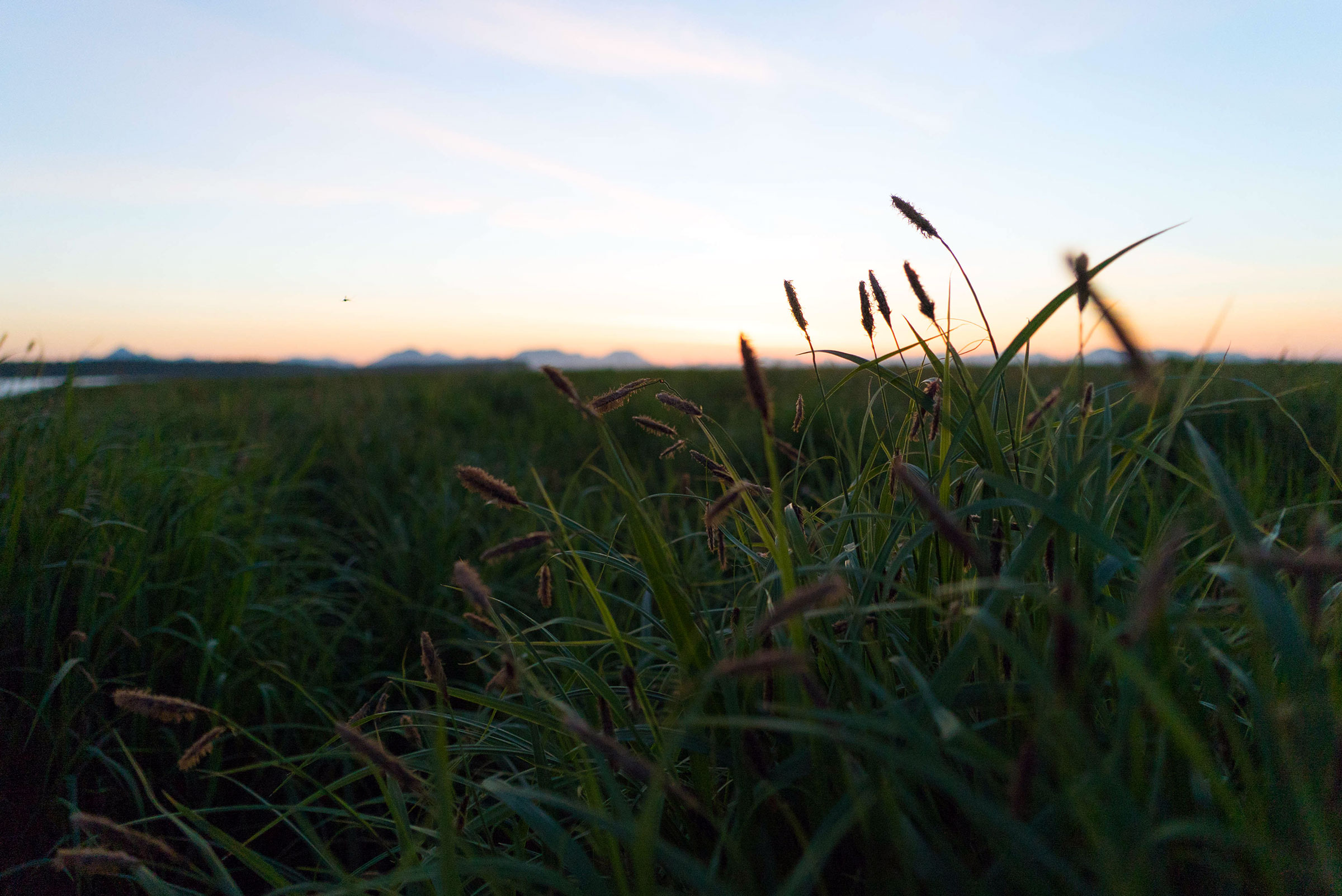
"I want everyone to know how amazing it is here — to be proud. To know how important salmon are to our lives and our history."
These long hours of the summer solstice are a time for Alaskans to rejoice in the productivity of light, life, and the abundance of the season. As a mother, artist and subsistence fisherman, filling the day to the brim is just life as usual for Apayo.
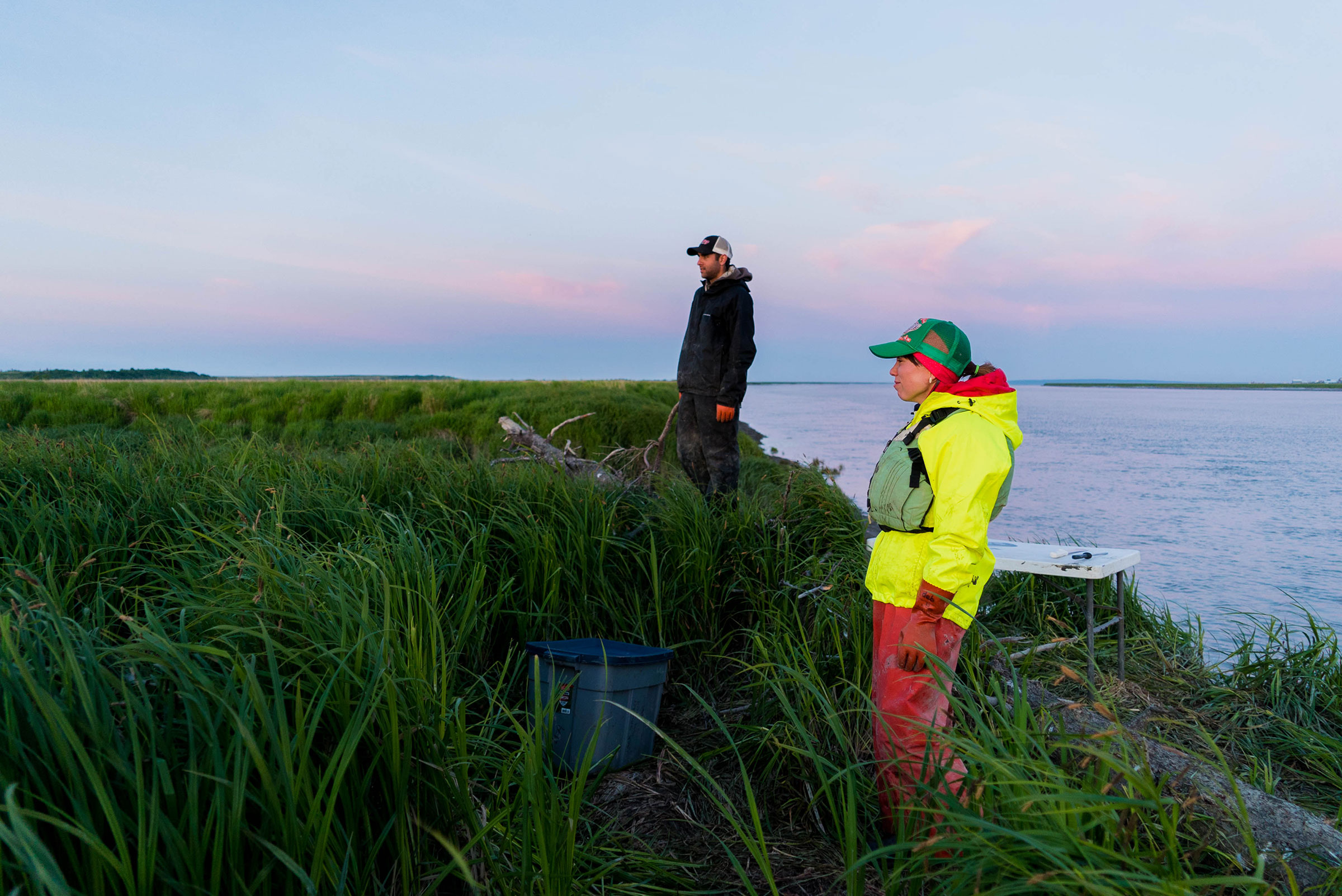
By midnight, Apayo and Chris reach their fishing grounds and are quick to motor their net into the rushing river. Apayo calls out in Yup’ik singing the word for red salmon, “Sayak, sayak, sayak,” greeting the tails that begin to flutter in the net.
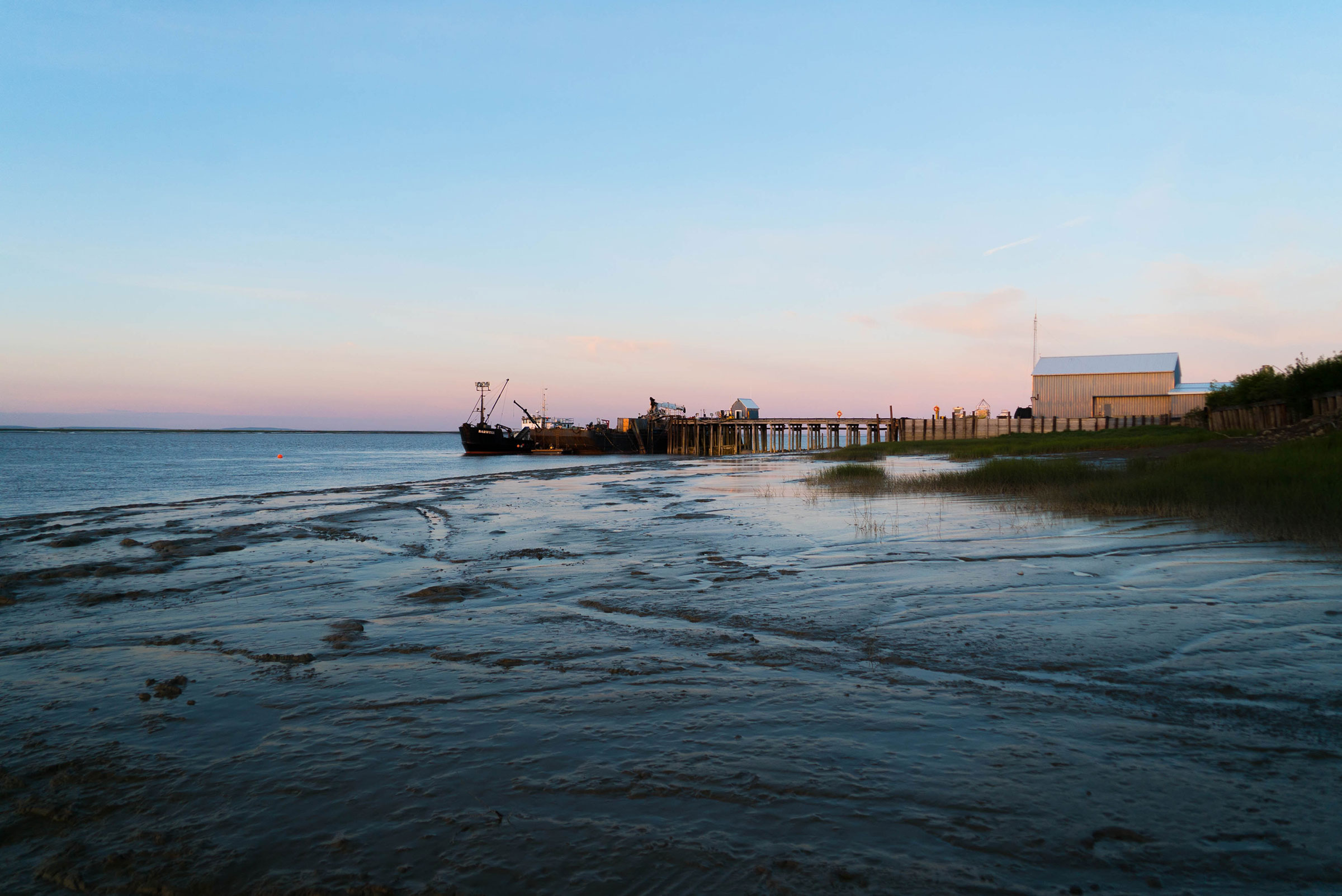
Apayo and Chris set into a rhythm, plucking reds (and a single prized king) from the net and resetting it. On shore, they gut and clean the fish as the night melts into the mantel of mountains to the west. It is constant work punctuated only by wistful gazes across the grasslands and a 2AM pause to don a headlamp. At one point, enamored by the beauty, Apayo joyously calls out, “I love this place!”

That passion is the first thing you notice about Bristol Bay-inspired artist Apayo Moore: she is bursting with endless love for the land she calls home. It shows in her full embrace of fishing, and also in her artwork. As a painter, Apayo does not hesitate to brush her love for Bristol Bay across any blank surface she can find. From the sides of buildings to plywood sheets to the countless canvases in her basement, Apayo churns out constant reminders of the beauty, grace, and power of this land. “I want everyone to know how amazing it is here — to be proud — to know how important salmon are to our lives and our history,” Apayo insists.

Apayo’s own history is rich with childhood memories of commercial fishing in the Bay with her dad, learning the values of hard work and high-sea adventures. Looking back, she longs to have participated with her mom in more subsistence and traditional fishing practices. After giving birth to her own two children, Kaya and Bode, Apayo’s profound desire to provide for her family was solidified. She asked her mom to come live with her for a season to teach her how to put up fish. “That was a hard summer,” she reflects. “I’ll forever be grateful for it. It felt like I was truly making a transition to being a woman.”
“Salmon are our mental wellbeing. They get us out of the house. They offer space to have personal interactions and give us goals to accomplish.”

Last summer, Apayo only needed her mom’s instructions over the phone. This year, she has barely needed any guidance at all and has even begun teaching cousins and friends who want to join in and help. “But I still have so much to learn,” Apayo assures as she moves her ulu with poise through the glistening flesh of her catch. “If you let the fear of imperfection into your head, you won’t get anywhere. It’s just like my art. If I had quit at the first bad brush stroke, I wouldn’t be a painter.”
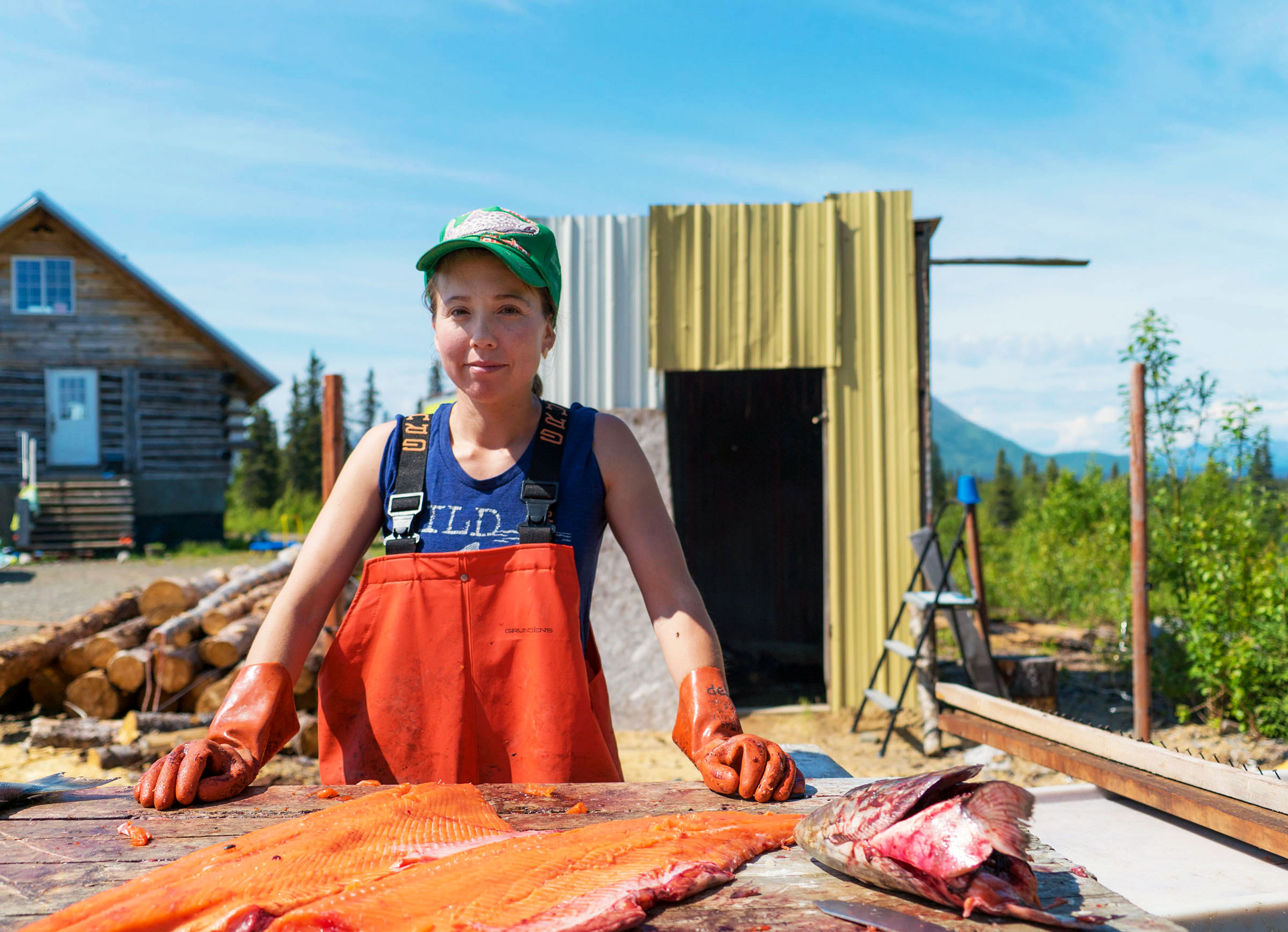
Apayo holds space for this learning process at her home outside of Dillingham. Perched atop a hill in the village of Aleknagik, Apayo has aptly named her home “Happy Hill,” where art projects brush shoulders with children’s toys, salmon projects stand alongside piles of firewood, and the days are full of fish scales, alder smoke, and hollering children.

“It’s like a crazy little fish camp up here,” Apayo laughs. There is always something to be done with fish at her home and she recognizes the importance of that. “Our people have worked for generations to set up this schedule for us to keep our state of mind on track. If a person thinks there is no purpose in life, they could start with a salmon and a tide book.”
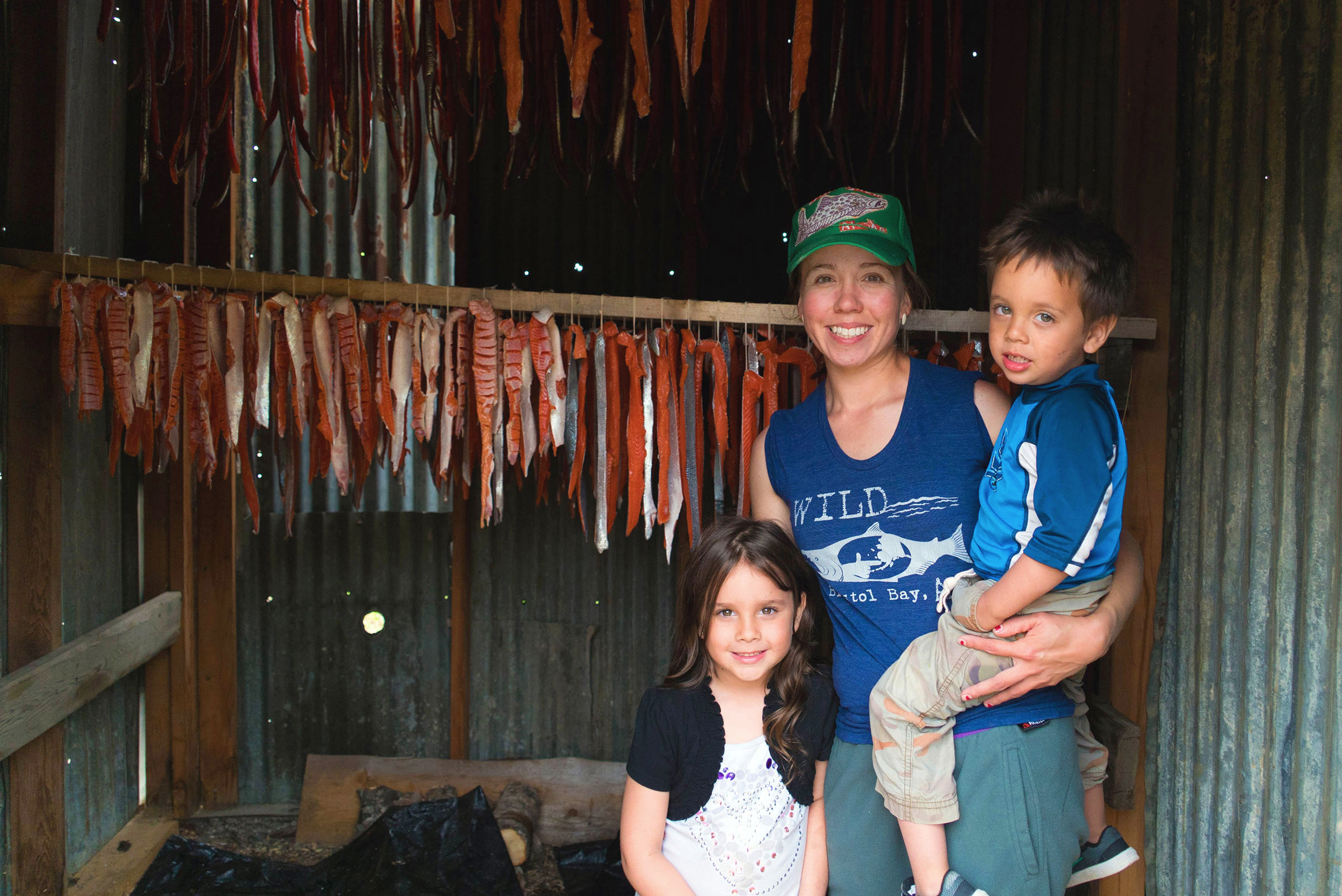
For Apayo, this is where her art comes in: to inspire her people to get involved in the beauty and wonders of subsistence lifestyles. Apayo weaves positive energy into her paintings with the flow of sea life and the smiles of people harvesting. “I want their faces to say we are the real people. We live subsistence and flourish when we are generous, genuine and humble.”
Apayo gets the community involved in her art too, helping others make their own connections. In recent mural projects, community members were prompted to share what they love about the land and Bristol Bay, on 12 inch by 12 inch squares and wooden salmon cutouts. The results are gridded walls of tiles and huge undulating patterns of wooden salmon, all individually painted, and each with their own unique expression of what it means to call Bristol Bay “home.”
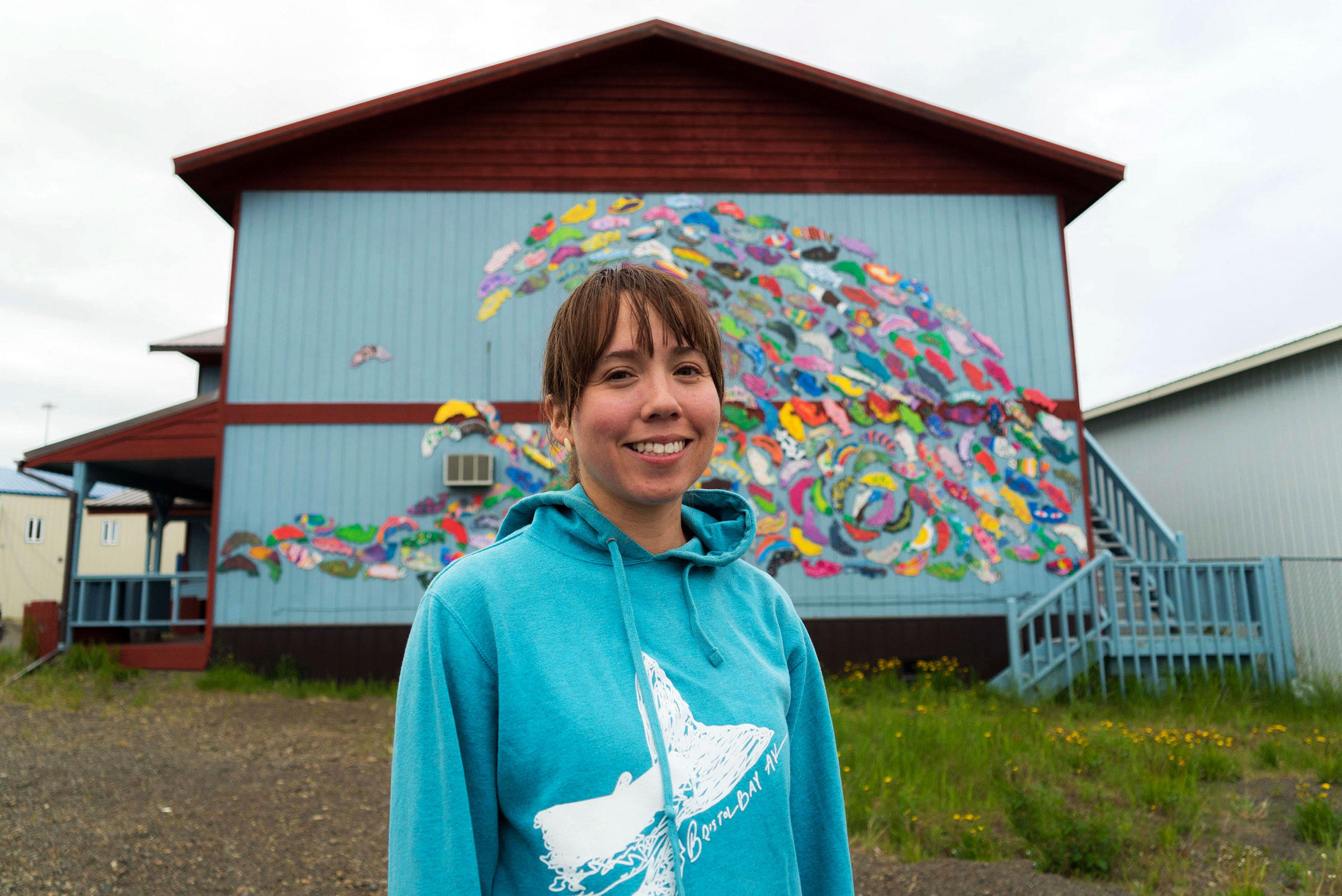
“Life as a Yup’ik person is just so different than what we have in the rest of the United States. Salmon are our mental wellbeing. They get us out of the house. They offer space to have personal interactions and give us goals to accomplish.”
Apayo knows the love she pours into her art, the love she champions for salmon, and the love she lays down for her family above all else — that love is the truth.

Apayo recalls her recent painting titled Our Way of Life. It sums up the very essence of all of her love: “There is a woman pulling in the net with all these red salmon. Her family’s in the back with all the positive things of what that moment could be. Everyone’s in high spirits. Everyone’s being everything in that moment. In a setting that’s absolutely unreal. Mountains. Blue sky. Birds flying above you. Nothing could go wrong. Nothing at least for that moment.”
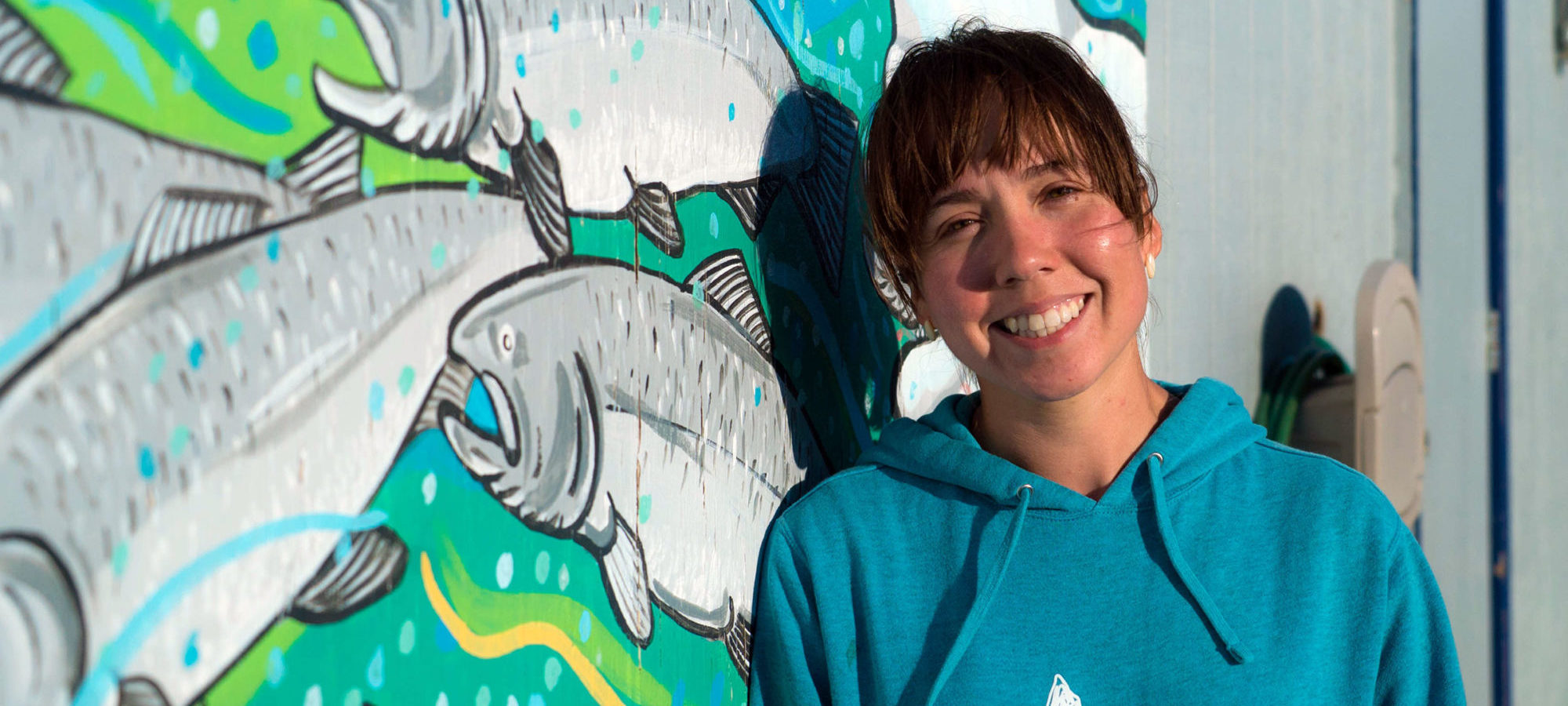
No comments.